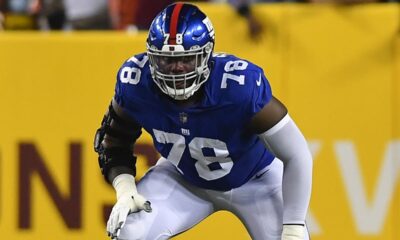
The home run Ted Williams hit on June 9, 1946, is marked to this day in Fenway Park with a red seat. Lately, there has been speculation.
Boston Red Sox 1B Triston Casas is not the first to state his belief that the long OF Ted Williams home run is a myth. DH David Ortiz expressed doubt back in the day, and MLB guru for ESPN Buster Olney thinks it is a myth too. See the view for yourself to decide. What do I think? Believe it or not, I am not quite old enough to have ever seen Williams play in person. Regardless, I believe the Splendid Splinter scorched a home run estimated to have gone 502 feet. It’s only one tenth of a mile.
Reasons to Logically Believe
If you ask any educated individual who the greatest hitter in baseball history is, they’ll say Ted Williams. If they do not, they cannot be trusted. I suggested this to the FBI and was ignored. Still never hurts to stay vigilant. Anyways, the stats speak for themselves in Williams’ case. 521 career home runs, .344 batting average, and .634 career slugging. How feared was Teddy Ballgame as a hitter? He still has the highest career on-base percentage in history at .482. His batting average was great, and so was his walk rate. He always said, “The secret to good hitting is getting a good pitch to hit.” Not only were pitchers scared to throw him strikes, but he was able to not make mistakes by swinging at balls. Almost as good a walk rate as Ernie Pantusso.
It also must be mentioned on the home run side of things that Williams missed three seasons during his prime. He served as a naval aviator during World War II, missing the entire 1943, ’44, and ’45 seasons. He then missed most of two more seasons serving during the Korean War. Give a player of his caliber five seasons back and in theory, he would have at least 100 more home runs. Six players in history have hit over 600 HRs, so Ted could have been in the company of Babe Ruth, Hank Aaron, Albert Pujols, Willie Mays, Ken Griffey Jr., and Jim Thome. Barry Bonds, Alex Rodriguez, and Sammy Sosa do not count in my book, but that is a debate for another day.
Unmatched Achievements
The fabled red seat is not Williams’ only unmatched accomplishment. If those brief statistics do not demonstrate his prowess, being one of two players to earn the Triple Crown twice should help. Rogers Hornsby did it before Williams (in 1922 and ’25). In 1942, Williams hit .356 with 36 HRs and 137 RBIs. After some time off flying fighter planes higher than any of his home runs ever went, he earned a second Triple Crown in 1947. A .343 average, 32 HRs, and 114 RBIs sufficed that season.
The last stat is the fact that Williams is the last player in MLB history to hit over .400 for an entire season. As the story goes, on the last day of the season his average was .39955, which rounds up to .400. Instead of sitting on his laurels, he played both games of a double header, going 6-8 in the process. This meant he ended the season at .406. Doesn’t that sound like the kind of mindset that leads to a helluva home run?
Add all of these statistics and achievements together and it becomes at least plausible that he could have hit the home run. A disciplined hitter got a good pitch to hit and then belted it into the bleachers. It probably felt like batting practice. He likely had the wind at his back as well, which was more of a factor at Fenway in 1946. There were no upper-level seats at the time.
Reasons to Irrationally Believe
Those statistics are great but, in a world where seeing is believing, doubters are out of luck on that front. If the logical argument failed, maybe the illogical will add up more. One reason to irrationally believe he did it is because, why not? Isn’t it fitting that the greatest player in Sox history hit the farthest home run in Fenway Park history. Would you rather it was done by an opposing player? No thanks. Also, a 53-year-old Williams was still able to tee off shots during batting practice while working as manager of the Texas Rangers. If he was nearly hitting HRs at Fenway while old, out of shape, and over a decade removed from his playing days, it stands to reason he could belt a 502-footer while in his prime.
Fred Hutchinson was pitching on that fateful day, June 9, 1946. Two years later, he gave up the most home runs in baseball. He very well could have made a mistake Williams more than happy to take advantage of. In addition, Williams’ offseason training is not replicated by most players today. An ardent fisherman, Williams’ casting of heavily baited lures likely strengthened his arms in a way no amount of push ups, pull ups, or pumping of iron can replicate.
Final At Bat
This subheading was supposed to mean my final thought, but while were talking of final at bats, Ted Williams’ last one was a home run at Fenway. Clearly, another reason to believe. Now in conclusion, the doubt of the validity of the home run is fair, especially when coming from players like Ortiz. It is rational to doubt stories lacking concrete evidence. Everyone believes in something irrational, so why not believe in some baseball folklore? This is certainly an easier one to digest than the story of Josh Gibson’s home run hit in Pittsburgh getting caught the next day in Philadelphia.
Now we just need him to wake up from his frozen slumber to give the 2024 Red Sox the power to hit like he did. Surprisingly, the Sox are one of the top teams in the league for home runs. Home runs hit, not given up. We’ll never see another like Williams, so let’s keep players striving for the unbelievable, his red seat home run.
Related

Featured Articles
-


Features
/ 1 day agoNL April All-Star Team
All-Star teams are difficult to make but important to consider. After making the AL...
-


MMA
/ 3 days agoFighter Spotlight: Alex Perez
Stepping in on short notice and being on a three-fight losing streak. Alex Perez...
-


Features
/ 4 days agoAL All-Star Team for April
Only one April All-Star will be player of the month, but all deserve recognition...
-


Big Blue Report
/ 5 days agoAndrew Thomas Primed for 2024 NFL Season Amidst Offensive Line Overhaul
As the NFL offseason unfolds, the New York Giants are busy reshaping their roster,...
By Randy Zellea





